
Interested in how PERI can support your next project?
Call us on 01788 861600 to discuss your requirements further.

Work is being carried out to expand the route from Neath Port to Monmouthshire into a dual carriageway, which will improve traffic flow and make travelling from south-east to south-west Wales more accessible and safer. At a cost of almost £600m, the work on the final phase, which spans from Hirwaun to Dowlais Top, comprises some of the most complex bridgework across the entire project.
Following its previous involvement in the earlier phases of the project, PERI was reappointed to design and supply temporary works for a range of structural components on the final sections, working alongside main contractor FCC and sub-contractors, Thames Valley Construction (TVC) and Tecozam.
Sections 5 and 6 comprise a mix of in-situ and precast construction. Over thirty bridges are being built for the final section. Finishes across these structures range from a basic to fluted to a brick effect finish at the Jones Street site which was achieved using a reckli liner and TRIO formwork.
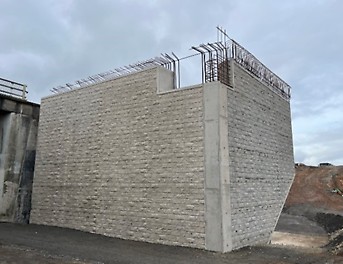
The abutments and piers are equally architecturally demanding and have been delivered with careful consideration of the formwork design and the installation process.
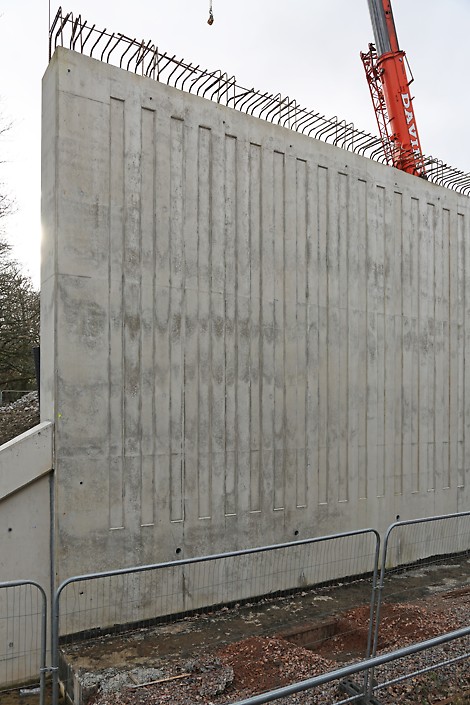
For the abutments, PERI’s design team looked at how the formwork panels could be tied together without compromising the finish. The solution was to install ties and walers from the back of the panels to minimise the visual impact on the concrete surface.
Along with the finish, the rate of rise and access requirements for pouring and installation were factors that determined the temporary works design for the tallest abutment which is 14 metres high. Larger formwork ties and additional walers were used to withstand a pressure of 80kN per sq m and achieve the 3-metre an hour pour rate.
Accessibility on bridge projects can often be challenging. Heads of the Valleys is no different, with many of the project’s piers and abutments situated in inaccessible areas.
The piers supporting the Nant-hir bridge are a prime example of this type of challenge, as the bridge crosses over the Nant Hir Reservoir. Adding to the complexity is the splayed shape of the piers which have been formed with TRIO to support the pour sequence and height.
As the piers were poured in two segments, using a panel system made it easier to extend the formwork without making changes to the fluting. Given the confined space on site, this would have been challenging to build with a traditional system, as climbing platforms would be required to support the weight of the formwork.
Multiple access requirements were fulfilled with PERI UP scaffolding. For the abutments, TVC required access from the ground up to facilitate the installation of steel reinforcement followed by formwork. The scaffolding was designed to serve both parts of this process with minimal adaptations required.
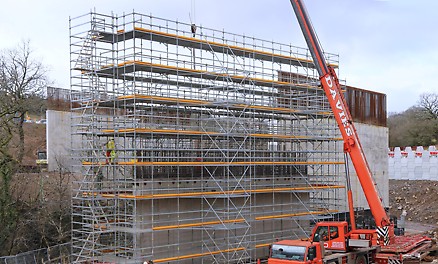
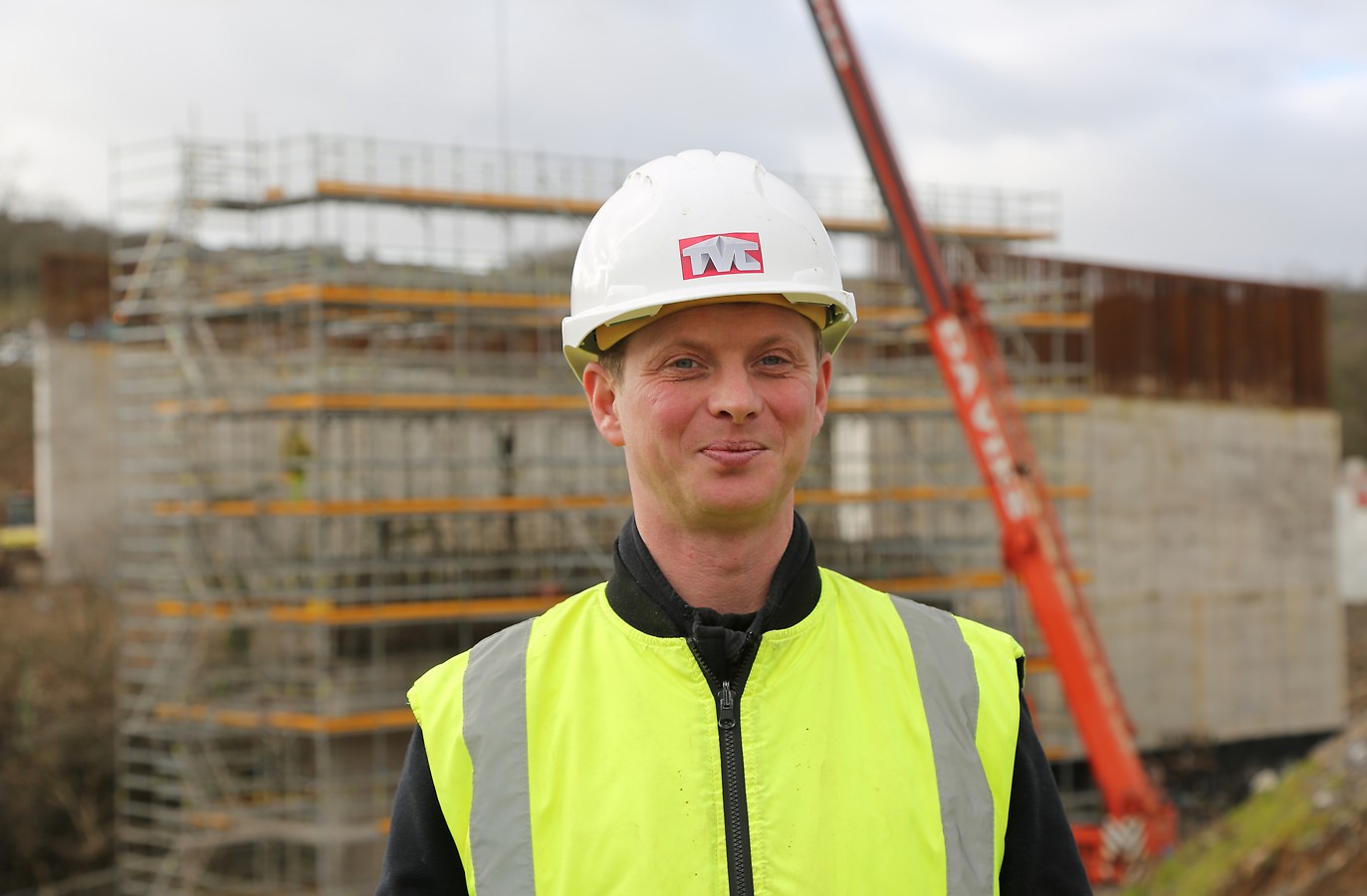

Typically, scaffolding towers at this height would be tied into permanent structures. In this case, lack of permanent structures meant the scaffolding had to be self-supporting with bracing and buttresses incorporated into the design.
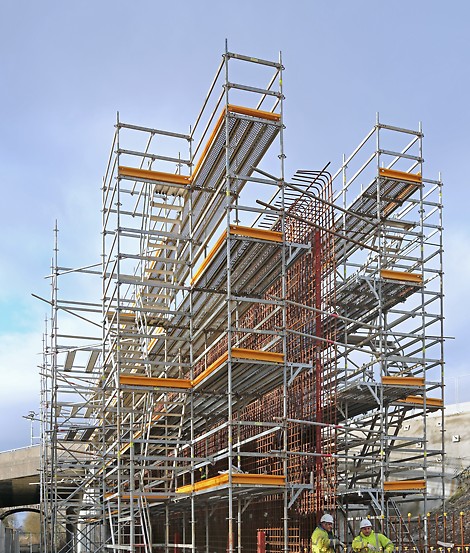
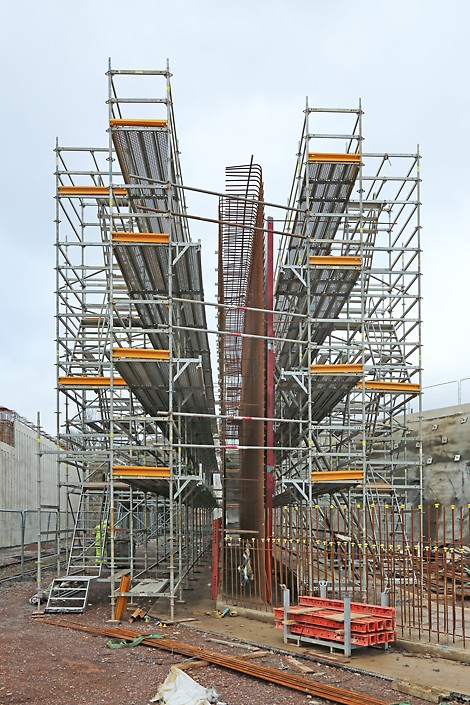
Access scaffolding has also been instrumental in prefabrication work. The PERI UP system was used to facilitate the build of reinforcement cages in a different location on site before they were repositioned in situ by crane.
Scaffolding has also facilitated the construction of the Taf Fawr bridge deck, with a 30m-high PERI UP 75 stair tower erected to provide an access point for Tecozam’s traveller system. A smaller staircase will connect the traveller to the main platform to support pouring operations.

Call us on 01788 861600 to discuss your requirements further.